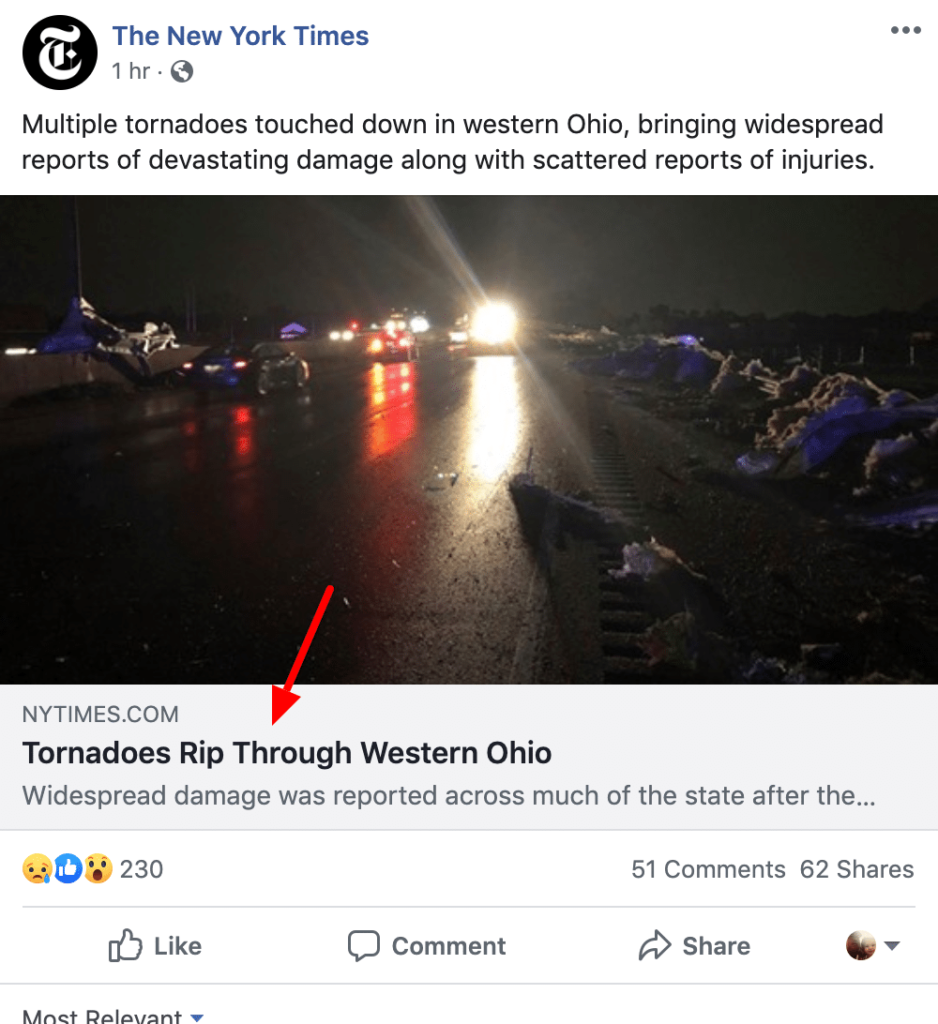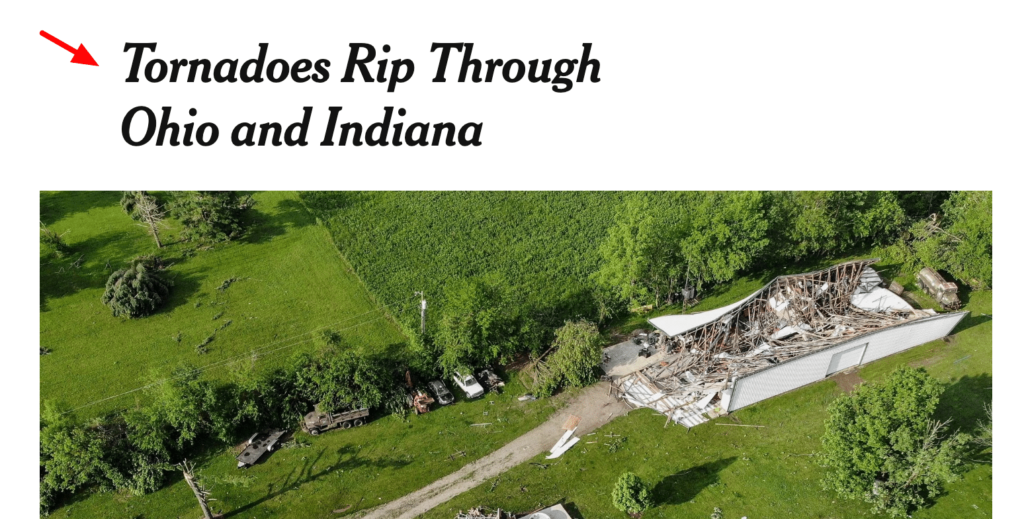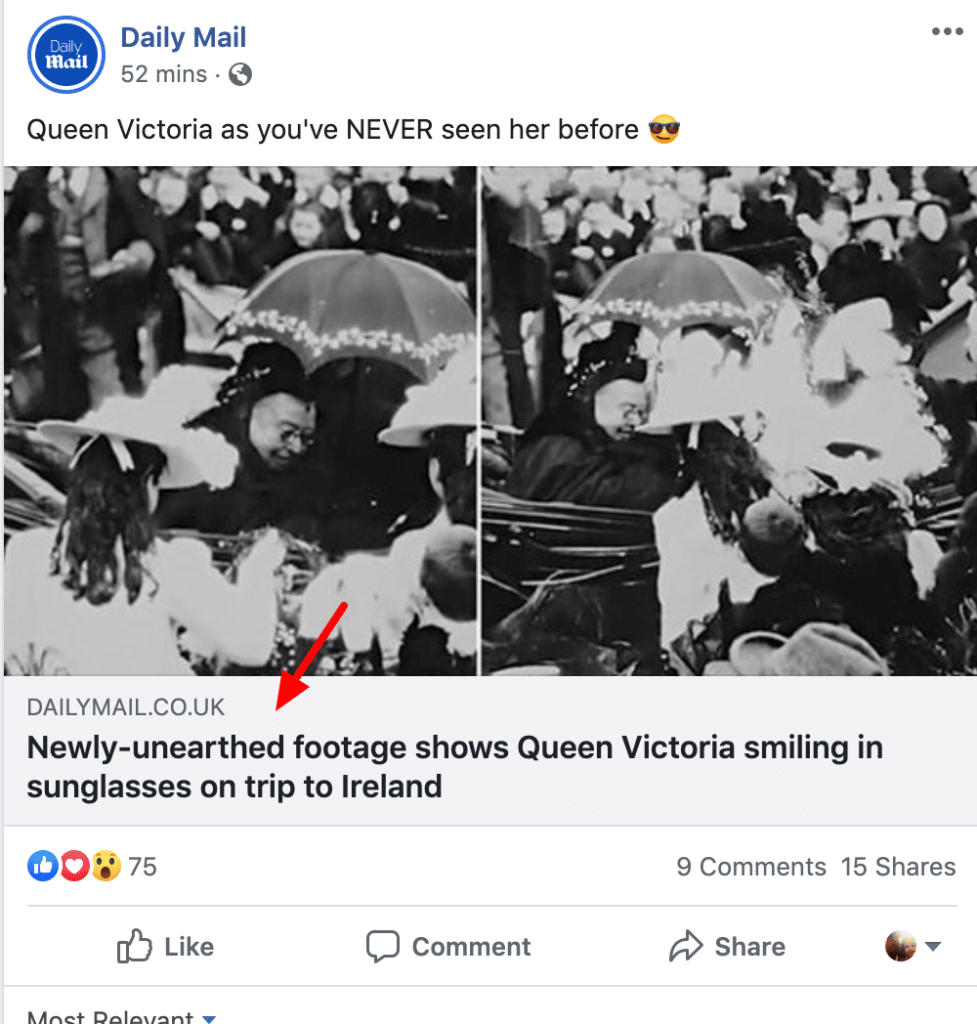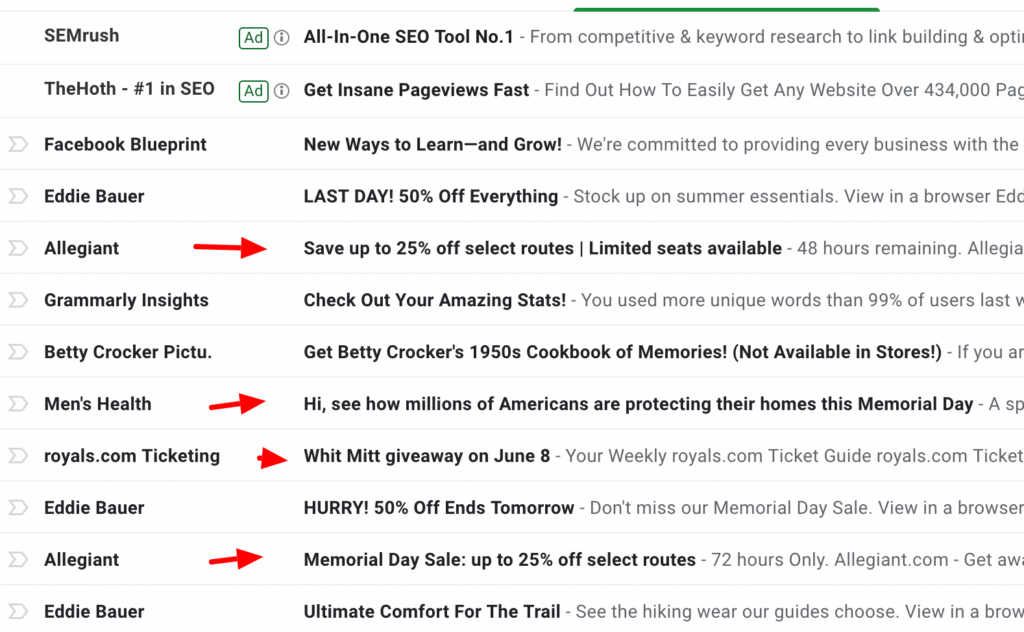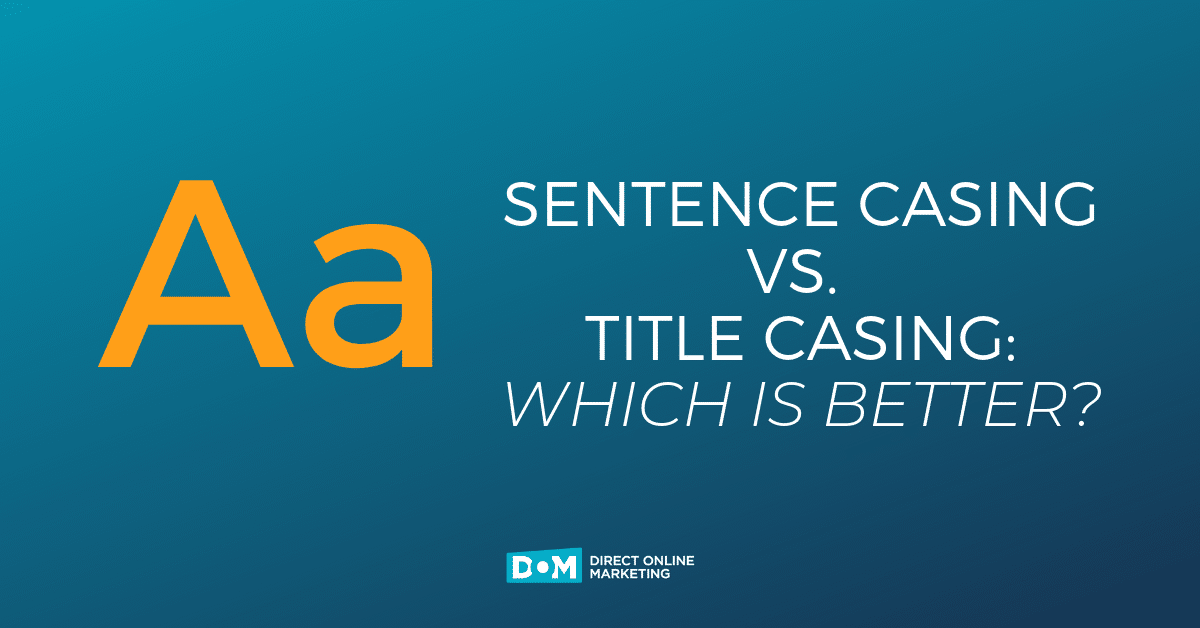
For many marketers, deciding between title casing and sentence casing is a real struggle. Whether it be for social media headlines, ad copy, or email newsletter subject lines, title casing vs. sentence casing is a highly charged debate.
Our data-overload marketing ecosystem lends itself to over-analysis at the highest of levels. As we battle an increasingly saturated content marketing space, every click or open we can milk matters.
Due to this, we find ourselves zoning in on what often feels like trivial matters. Should we capitalize all the words in our subject line or write them using appropriate grammar?
We don’t want our headline to get scrolled past in a Facebook mobile newsfeed. We can’t bear the thought of our Google Ads failing to entice action. We want to avoid super low open rates on our newsletters.
This is how title casing vs. sentence casing becomes more crisis than luxury. Our attentiveness to our competition breeds self-doubt in our own strategy.
What Is Sentence Casing?
Using sentence casing means capitalizing words which begin a sentence or are proper nouns. When you deploy sentence casing, you’re simply following standard grammatical rules.
Here’s an example:
Parades line streets of Baltimore for New Year’s Eve.
Sentence casing is popular in Europe.
What Is Title Casing?
When you use title casing, you mostly capitalize the first letter of each word in the headline. Some marketers capitalize all words, while skip capitalizing non-essential words.
Here are two examples:
Parades Line Streets Of Baltimore For New Year’s Eve.
Or
Parades Line Streets of Baltimore for New Year’s Eve.
You will notice in version two of the title casing headline I don’t capitalize “of” or
“for.”
Title Casing Remains Popular in America (See What I Did There?)
So now we understand the differences between title casing and sentence casing. We know one is the preferred headline structure of Europe while the other is more prevalent in the United States.
But why?
United States Publishers vs. European Publishers
The people of the U.S. and Europe do a lot of things differently. In The U.S., we tip waiters and waitresses based on the quality of services rendered. In Europe, tipping is generally not an observed practice to show gratitude for great service.
We could argue all day over the practice of tipping. And what we’d likely find is that there’s a case to be made on both sides.
The same goes for title casing vs. sentence casing. This article isn’t about which is better, it’s about why there is a debate and how a marketer should approach the strategy.
Let’s look at two cases. One is from U.S. based publisher, The New York Times. The other is from U.K. based salacious news publisher, The Daily Mail.
Here’s a social media post from The New York Times. You’ll notice the American based publisher leverages title casing in it’s Facebook headline.
You’ll observe that each word in the headline is capitalized. Additionally, the article page uses title casing.
One quick note: You’ll notice The New York Times separates its titles between social media and on-page. Both titles are title case, but the title on-page is different from the social media title you see on Facebook. That’s proper marketing, but I digress.
Now, let’s grab a sentence casing example from The Daily Mail.
You’ll notice this headline is using proper grammar. The word at the beginning of the headline is capitalized, as are the proper nouns “Queen Victoria” and “Ireland.”
In Germany, it is proper grammar to capitalize all nouns. In this case, title casing optically confuses Germans because they lose their initial distinction to visualize nouns. My point is, title casing vs. sentence casing isn’t completely trivial. It absolutely can affect how users interpret your headlines.
How Do Marketers Handle Title And Sentence Casing In Different Geos?
The next question is obvious: how do marketers proceed?
You could create separate posts for various geos. But that sounds awful, at least when we are dealing with organic Facebook newsfeeds. If I look at the casing examples from The Daily Mail and The New York Times, I can see they’ve used public posts. Meaning, it isn’t likely they made any distinction from their German-based readers or Idaho-based readers.
I’m not suggesting to simply copy what bigger publications do; I am, however, suggesting the side-note carries weight.
This is where things are going to get a bit confusing. Here’s why:
We’ve established that Americans and Europeans are used to two different types of casing. But we haven’t established that it influences marketing efforts. We can’t say that one way leads to more clicks, even when isolated by geography.
This is where I tell you to use Google Analytics to empower your content marketing efforts. This is where I encourage you to become a data-driven decision maker, thereby not relying on faulty “instincts.”
Understanding that sentence casing and title casing vary based on cultural influences is initial data, but it should not serve as an end-all conclusion.
So what now?
Only Worry About Ads
As noted above, The Daily Mail and The New York Times each deploy unique casing strategies for their social and on-page headlines. But both show the “public globe” as the filter, meaning they didn’t filter down based on location. In fact, I see every The Daily Mail posts and all of those posts use sentence casing.
Filtering organic posts based on location and then setting up casing to reflect the geo is a lot of added work. It is unlikely you’ll reap any benefits. People who live in London and follow the The New York Times are now accustom to their title casing ways.
Additionally, you really are limited to only test social titles, not the on-page titles. Unless you want to create mirror articles. Then there are duplicate content issues, unless you fix those. It’s just a lot of work for no good reason.
But with ads, we can and should A/B test everything. With Facebook, you can boosts posts, but it isn’t the smartest way to ad buy. The better boost post practice means setting up new posts inside Facebook Ads manager.
In this case, you can set title casing or sentence casing for your headline. And you can test each instance in each geo.
We shouldn’t assume things. We shouldn’t assume that an article title cased will perform better in Los Angeles than one that’s sentence cased. We should test. We should learn.
With Google Ads, testing headline copy is essential stuff. Why not deploy some casing tests? You can break down your testing to geo.
For DOM, we run title casing for the initial Google Ads headline (headline 1). We no longer distinguish between Europe and America. Why? Because we’ve tested these efforts across multiple clients.
But don’t take our word for it, do the testing yourself. Discover what entices users to click, buy, fill-out, etc.
In ads, casing affects more than just a main title. It can affect the results of lead-generation boxes. Don’t rely on our results, rely on the ones you discover for yourself.
The Optics of Casing
You’ll notice I’m title casing my sub-headers. I also title case my main on-page titles, my ad copy, my newsletter titles, and my social titles.
My rules are simple.
- Keep titles short and title case them.
- The longer the title, the more optically unpleasing title casing becomes (in my opinion). This is why we would never want to title case a long description. It makes it harder to read.
Let’s look at what I mean.
Tornado Touches Down In Oklahoma City
Many Residents In Both Suburban And Oklahoma City Proper Reported Intense Wind Speeds, Damaging Hail, And Structural Damage.
Or
Tornado Touches Down In Oklahoma City
Many residents in both suburban and Oklahoma City proper reported intense wind speeds, damaging hail, and structural damage.
Clearly, version one looks jumbled. It makes it more difficult to read the description. The description and title sort of mash up together in a chaotic way. The second version is much easier on the eyes.
I use title casing in my sub-headers because my sub-headers are intended to break up my article. I am striving for readability and if you’ve made it this far, I’ve won the battle (at least with you).
But it isn’t as if you have to mirror my strategy. Notice, I also use some images under sub-headers as a way to help break up the page. I have no proof my title cased sub-headers are more effective than otherwise sentence cased sub-headers. Most likely, it makes very little difference, if any. We don’t want to fall victim to over-analysis.
Title Casing vs. Sentence Casing In Newsletter Subject Lines
While I’ve briefly mentioned newsletter subject lines in this article, I haven’t dived in, until now.
Much like running Google Ads, subject lines should be tested. I can’t tell you what will work for your newsletter subject lines nor for your Gmail ad copy.
But let’s look at a live working example straight from my Gmail promotions tab this morning. You’ll notice the first two are Gmail ads.
So what’s the takeaway?
Both Gmail ads instances use title casing.
Almost all the organic promotional offers use title casing. I placed red arrows by the acceptions. Allegiant airlines Memorial Day mailer uses a mix of both.
So what did we learn?
We need to test and determine which works for our efforts.
My Ultimate Takeaways
- Test headlines and ad copy between sentence casing and title casing.
- From an optic’s standard, title casing looks better when headlines are shorter.
- Avoid title casing on descriptions.
- I feel title casing looks better on sub-headers, but it unlikely makes any meaningful difference.
- Promotional email subject lines often title case.
- Europe’s normal is sentence casing, U.S. normal is title casing.
- In Germany, all nouns are capitalized, which may make title casing confusing to readers.
